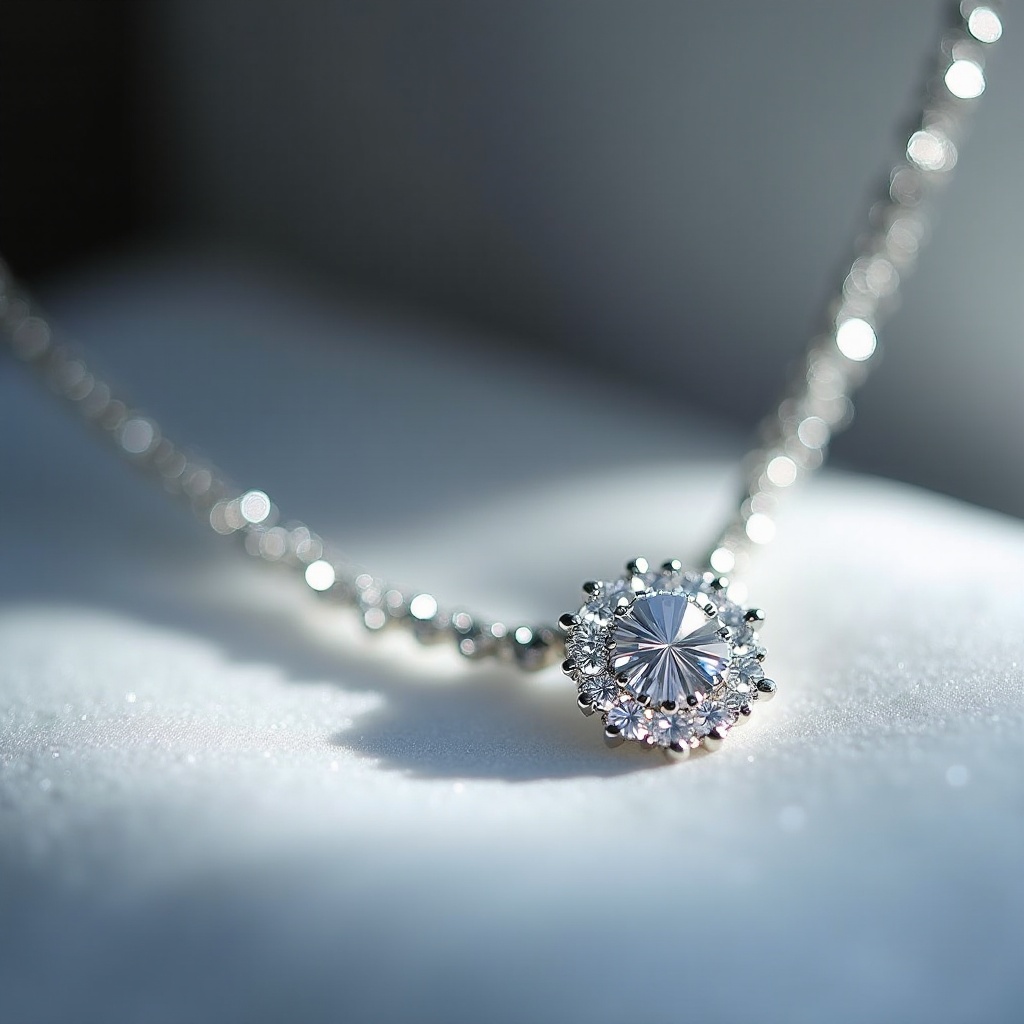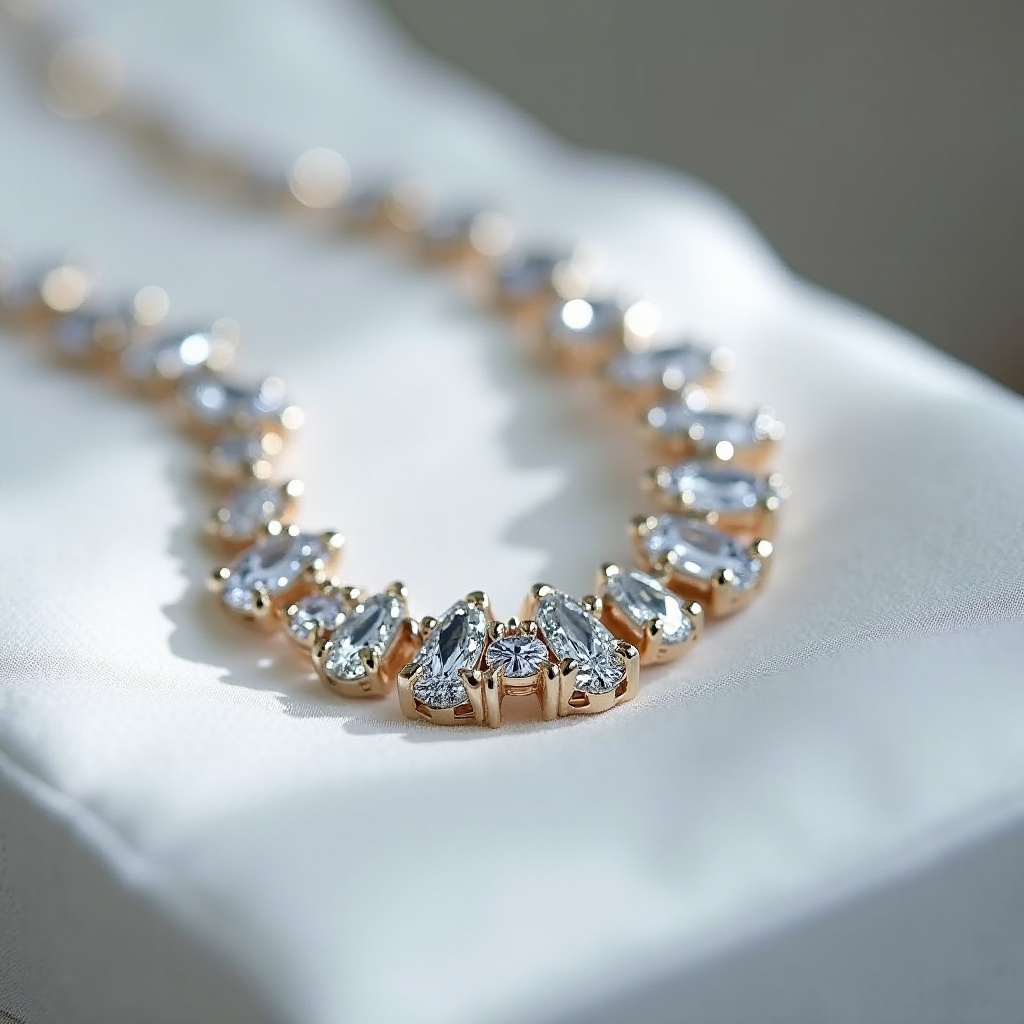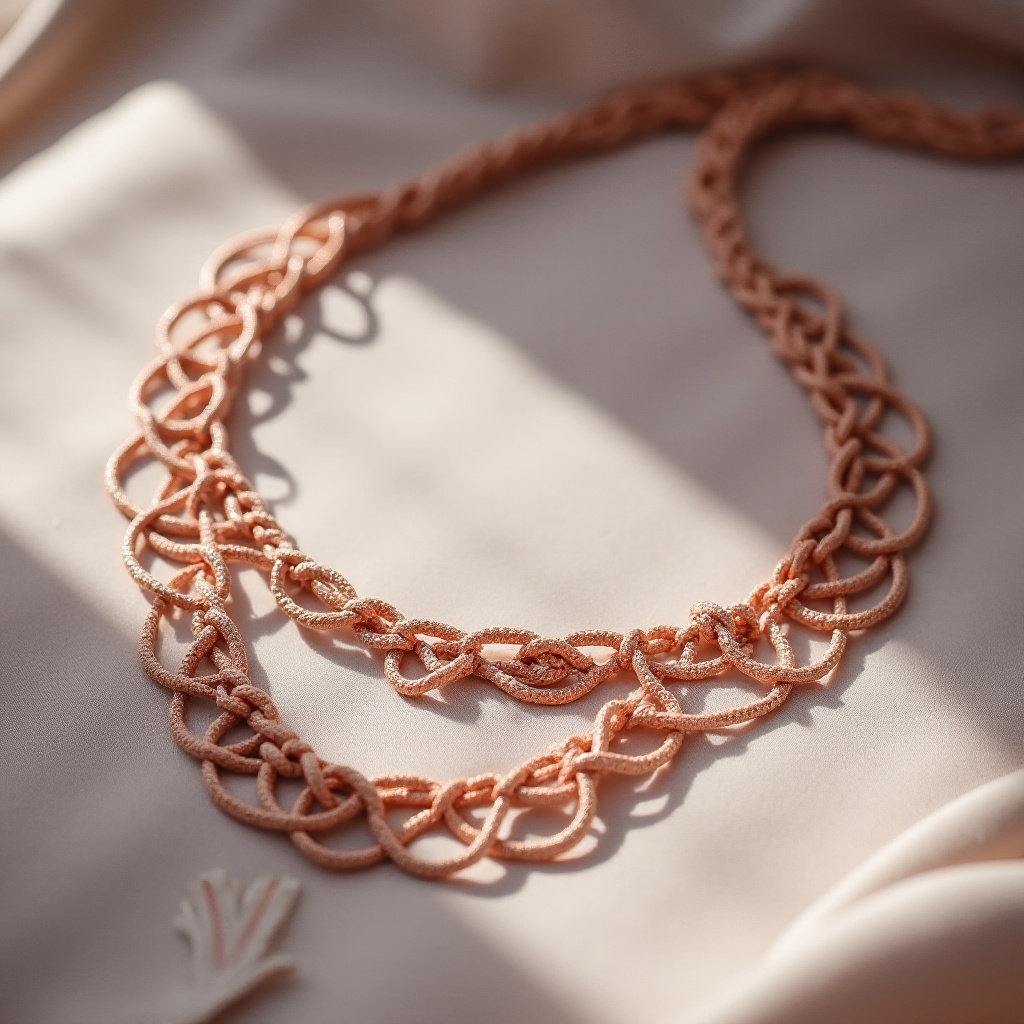Introduction: Why Cleaning Your Diamond Necklace Is Essential
Diamond necklaces, with their unrivaled brilliance and elegance, are prized possessions that embody beauty, status, and sentimental value. However, maintaining their sparkle requires regular care and attention. Diamonds, while being the hardest natural material on earth, can easily collect dirt, oils, and residues from everyday exposure. These factors can create a dull film over the diamond’s surface, diminishing its characteristic sparkle. Routine cleaning, therefore, is vital—not only to restore the stone’s brilliance but to prolong the life and integrity of the necklace. A well-cared-for diamond necklace remains a timeless centerpiece that can be cherished and admired for generations.

Safe and Effective Cleaning Steps
Step 1: Gather Your Materials
Before embarking on the cleaning process, ensure you have the appropriate materials to avoid any damage. Use a soft-bristled brush, such as a baby toothbrush or dedicated jewelry brush, which is gentle enough to protect the delicate metal setting and the diamond itself. Opt for a mild, unscented dish soap, which is effective in removing dirt without leaving residues that could cloud the gemstone. Lukewarm water is ideal as it soothes the diamond without causing thermal shock. Finally, use a lint-free cloth, such as microfiber, to dry the necklace, ensuring no fibers are left behind to diminish its shine.
Step 2: Cleaning Process
To begin the cleaning process, mix a small amount of mild dish soap with lukewarm water in a bowl. Place your diamond necklace into the solution, allowing it to soak for about 15 to 20 minutes. This soaking helps to loosen accumulated grime and dirt that can cling to the diamond’s surface and the crevices of its setting. Post soaking, gently brush the necklace with your soft-bristled brush, concentrating on the back of the diamond and the prongs, where oil and dust build-up is most frequent. The gentle scrubbing motions help to dislodge any persistent dirt without damaging the metalwork or scratching the stone.
After brushing, rinse the necklace thoroughly under gently running warm water to remove soap residues that might otherwise dull the diamond’s brilliance. When rinsing, be sure to securely hold the necklace or perform this step over a container to prevent any accidental loss down the drain. Once rinsed, carefully pat the necklace dry with a lint-free cloth. Avoid rubbing, which can scratch the diamond’s surface; instead, blot gently, ensuring every part of the necklace is dry. This drying step is crucial, as leftover moisture can attract dirt more quickly.
To elevate your cleaning process, consider occasionally using a professional jewelry cleaning solution specifically formulated for diamonds. However, always ensure it is reputable and free from harsh chemicals.
Step 3: Regular Maintenance Tips
In addition to regular cleaning, incorporating consistent maintenance routines can significantly prolong the life of your diamond necklace. Aim to perform a gentle cleaning routine at home every two weeks to fend off everyday dirt and oils. Additionally, schedule a detailed professional cleaning every six months. Jewelers possess advanced equipment and expertise that can thoroughly clean and inspect your necklace for any potential issues, such as loose stones.
Proper storage is equally important. Always store your diamond necklace in a soft-lined jewelry box or pouch, away from other pieces that could cause scratches. It’s wise to remove your necklace before applying cosmetics, lotions, or perfumes, as these substances can coat the diamond with a filmy residue. Furthermore, take off your diamond necklace during activities involving substantial physical exertion or exposure to harsh chemicals, such as swimming or cleaning, as these can degrade the metal settings or cause accidental loss.
Adopting these maintenance habits ensures your necklace remains as stunning as the day it was first worn, preserving its dazzling brilliance and structural integrity.

Common Diamond Cleaning Mistakes to Avoid
While cleaning your diamond necklace, avoiding common pitfalls is as important as the cleaning itself. A common mistake is using harsh chemicals or abrasive materials that promise stronger cleaning effects. Substances like bleach or ammonia can severely damage the metal setting, causing it to weaken or even erode over time. Another mistake is scrubbing too vigorously with a stiff brush, potentially scratching the metal or even the diamond. Be cautious with ultrasonic cleaners used at home; while they can offer convenience, incorrect use can lead to dislodged stones if vibrations are too intense or improperly calibrated. Such cleaning devices are best handled by professionals who can ensure the safety and security of your jewelry.

Summary
Diligent care of your diamond necklace not only enhances its aesthetic beauty but also safeguards its integrity and value. By following the right cleaning techniques and maintenance practices, you can ensure your diamond necklace continues to glow with the same allure it had when you first acquired it. The combination of regular cleaning, proper storage, and professional care forms a comprehensive approach to maintaining its shimmer and elegance. Remember, while diamond necklaces are crafted to last, they rely on your attentive care to retain their enduring brilliance, allowing them to be cherished and celebrated for generations.
How do you clean a diamond necklace at home?
To clean a diamond necklace at home, you should start by preparing a gentle cleaning solution using lukewarm water and mild dish soap. Submerge the necklace in the solution, allowing it to sit for 15-20 minutes. Use a soft-bristled toothbrush to gently scrub around the diamond settings and chains, ensuring all sides are cleaned. Rinse the necklace under warm running water and pat dry with a soft, lint-free cloth. Avoid harsh chemicals that can damage the metal or tarnish the diamond.
What are the best methods to make diamond jewelry sparkle?
To enhance the sparkle of diamond jewelry, regular cleaning is crucial. In addition to the dish soap and water method, you can use a solution of equal parts ammonia and water to occasionally restore the shine. Soak the jewelry in the solution for about 15 minutes, then scrub gently with a soft brush. Ultrasonic cleaners are also effective but should be used cautiously, especially with vintage or delicate pieces. Ensure the jewelry is dry and buffed with a soft cloth for maximum sparkle.
How can I clear up a cloudy diamond?
A diamond may appear cloudy due to residue buildup or inherent imperfections and inclusions. Cleaning can remove surface grime; use a mixture of warm water and dish soap, accompanied by a gentle scrubbing. For deeper clarity issues related to inclusions, professional cleaning or assessment may be necessary. Consider consulting with a jeweler who can recommend services like steam cleaning or even recutting if feasible to improve its clarity.
What household products can be used to clean gold and diamond jewelry?
Several household products can be effectively used to clean gold and diamond jewelry. A mixture of baking soda and water can be made into a paste to gently polish jewelry, particularly for gold. White vinegar is another safe option – soak the jewelry for 15-20 minutes and then rinse thoroughly. Be cautious with abrasive materials to prevent scratching. Always test cleaners on inconspicuous areas first and avoid bleach, which can damage the metal.


